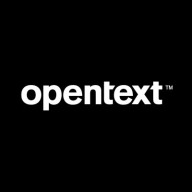

In the competitive landscape of automated testing software, OpenText Functional Testing (UFT) and Tricentis Tosca are prominent contenders. Tricentis Tosca holds an edge due to its adaptability to rapid business changes and model-based test automation.
Features: UFT supports a wide range of browsers and operating systems and features advanced object recognition as well as support for various testing frameworks including BPT and LeanFT. Tosca offers scriptless automation and robust model-based test automation which supports various UI and non-UI technologies while managing complex test scenarios effectively.
Room for Improvement: UFT could enhance browser compatibility, user interface, and CI/CD integration while addressing its reliance on UI and improving memory usage and programming language support. Tosca needs improvements in parallel execution and test case management, as well as more intuitive reporting features and expanded mobile automation.
Ease of Deployment and Customer Service: UFT mainly supports on-premises and private cloud deployments, often facing configuration challenges requiring technical expertise, with mixed customer service reviews. Tosca provides flexibility with both on-premises and public cloud support while generally receiving positive customer service feedback despite occasional update complications.
Pricing and ROI: UFT is a high-cost solution suitable for large enterprises seeking extensive testing coverage with significant investment in ALM integration. Tosca, though also costly, offers benefits in large-scale deployments through its model-based approach and automation capabilities, offering robust ROI through reduced manual testing and enhanced efficiency.
Automation is done very fast, leading to improvements in the QA process and reducing the time needed for test automation.
The development time using UFT can be cut down into half as compared to coding from scratch.
We can easily achieve a return on investment in one, two, or three years.
Tasks that typically take ten hours are reduced to two to three hours, representing a threefold productivity gain.
Support cases are easily created and attended to promptly, depending on urgency.
After creating a ticket, it takes three to five days for them to acknowledge it and then send it to somebody.
The technical support is rated eight out of ten.
My experience has been positive; their response to emails or phone calls in tech support is fast, usually between eight to ten hours.
Response through chat has been replaced by chatbots, which has impacted the experience.
There is no way to mark the importance or criticality of incidents when creating them.
The tool can be installed on all computers used by developers or test automation engineers.
It covers a breadth of applications and products, demonstrating excellent scalability that I have seen in reality.
Scalability is excellent with Tricentis Tosca.
One of the key stability issues was that Windows would consume memory without releasing it, leading to regression testing crashes.
For performance and stability, Tricentis Tosca deserves a 10 out of 10.
The stability of Tricentis Tosca is rated ten out of ten. It is very stable.
I find stability issues when using the Vision AI feature; Tricentis Tosca is not very stable.
Incorporating behavior-driven development tests would enhance the capabilities of UFT One.
If it could move closer to a no-code or low-code solution, it might dominate the market again.
We frequently encountered stability issues when the browser dependency caused Windows to consume memory without releasing it, leading to crashes during regression testing.
Moving to a cloud-based application rather than a desktop one could improve Tosca.
The Vision AI implementation works very slowly, affecting the speed of our work.
If a button in an application changes, Tricentis Tosca should be smart enough to detect the change and still execute the script seamlessly.
It's cheaper than Tricentis Tosca but more expensive than some others.
The pricing or licensing policy of OpenText is a bit expensive, however, it's one of the best solutions in the market.
There are many open-source tools with no cost, and there are no-code tools that are less expensive than UFT.
The pricing for Tricentis Tosca is extremely high, and I rate it as ten in terms of expense.
A yearly license costs around 20,000 euros.
For enterprise customers, the cost is manageable because it provides solutions for multiple applications they want to automate.
UFT supports Oracle, SAP, PeopleSoft, and other non-web applications, making automation feasible.
The object repository is one of the best in the market, allowing creation of a repository useful for all tests.
OpenText UFT One offered valuable features by allowing us to build up libraries to streamline repetitive tasks, making scripting much easier.
It allows for drag-and-drop functionality and demo automation in SAP-based applications, which can be challenging with other automation tools.
The most useful features of Tricentis Tosca include API scanning, basic web application automation, and data validation capabilities.
The modular approach reduces scripting effort by at least fifty percent, which significantly cuts down on the script development time.


OpenText Functional Testing provides automated testing with compatibility across technologies, browsers, and platforms. It targets APIs, GUIs, and applications like SAP and Oracle for efficient test automation, emphasizing usability and integration with tools such as Jenkins and ALM.
OpenText Functional Testing offers wide-ranging automation capabilities for functional and regression testing, API testing, and automation across web, desktop, and mainframe applications. It supports script recording and object identification, appealing to less technical users. Despite its advantages, it grapples with memory issues, stability concerns, and a challenging scripting environment. Its VBScript reliance limits flexibility, generating demand for enhanced language support and speed improvement. Users appreciate its role in continuous integration and deployment processes, managing test data efficiently, and reducing manual testing efforts.
What are the key features of OpenText Functional Testing?In industries like finance and healthcare, OpenText Functional Testing is leveraged for end-to-end automation, ensuring streamlined processes and accuracy in testing. Many companies utilize it for efficient test data management and integrating testing within continuous integration/deployment operations.
Tricentis Tosca is primarily leveraged for test automation across web, SAP, API, and mainframe applications, offering robust support for both regression and functional testing.
Tricentis Tosca's test automation capabilities extend to front-end and back-end testing, including processes like RPA and UI-based regression tests on Microsoft Windows. It supports Agile environments with multiple applications, enabling Salesforce automation, API endpoints, and end-to-end automation workflows. Tosca caters to diverse testing needs, integrating well with tools like Jenkins and Bamboo, although upgrades and customizations present challenges. Licensing costs and performance issues during loading and scanning are concerns, along with substantial learning curves for new users. Enhanced AI features and better reporting are on users' wishlist.
What are the key features of Tricentis Tosca?Tricentis Tosca is implemented across various industries, serving sectors like finance, healthcare, and retail with test automation solutions to ensure application quality and reliability. Agile teams in these industries benefit from its multi-application support and ability to manage complex end-to-end testing workflows. The tool's integration capabilities are particularly useful in environments that rely on CI/CD pipelines, ensuring continuous testing and quick feedback loops.
We monitor all Functional Testing Tools reviews to prevent fraudulent reviews and keep review quality high. We do not post reviews by company employees or direct competitors. We validate each review for authenticity via cross-reference with LinkedIn, and personal follow-up with the reviewer when necessary.